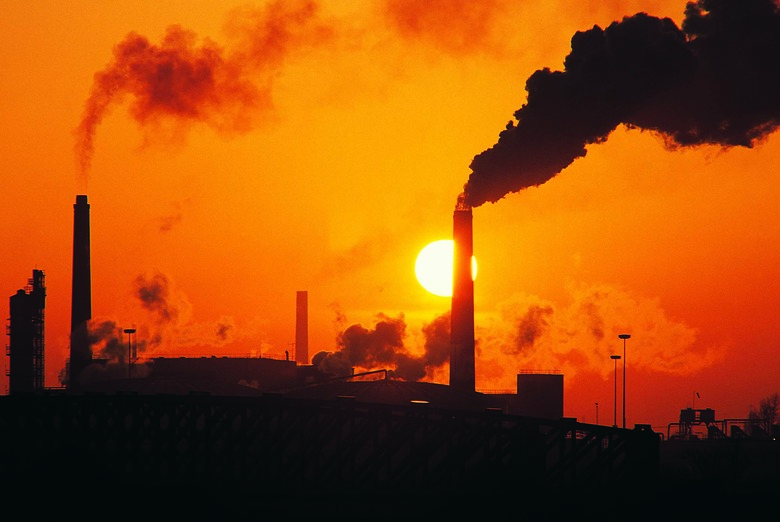What Gases Pollute The Planet?
As long as humans have controlled fire, they have released air pollutants into the atmosphere. But before the Industrial Revolution, there wasn't enough gas from human activity to have a significant effect on the entire planet. Today, however, factories, power plants, vehicles and other machinery burn fossil fuels worldwide that release tremendous amounts of harmful substances into the air. In areas where pollution has become concentrated, forests have been decimated by acid rain, many populations suffer from chronic respiratory problems and people die prematurely due to air pollution.
Sulfur Oxides
Sulfur Oxides
Sulfur oxides are produced during many industrial processes including those that involve combustion of fuels containing sulfur, such as diesel fuel. Power plants contribute to sulfur dioxide production. Diesel fuel, which powers most of world's freight shipping, also contains significant amounts of sulfur that is released as the fuel is consumed. In an effort to reduce sulfur emissions, most diesel fuel produced today is designated as ultra low sulfur diesel. In the atmosphere, sulfur oxides contribute to acid rain and in large amounts can cause respiratory problems.
Nitrogen Oxides
Nitrogen Oxides
Like sulfur oxides, nitrogen oxides are produced primarily by combustion processes either in factories or, more frequently, by vehicles. High concentrations of nitrogen oxides create a reddish brown haze of smog that can be seen above large metropolitan areas. Nitrogen oxides also react with volatile organic compounds when exposed to sunlight and heat to create ozone, which is another harmful gas in large concentrations. In areas with high nitrogen oxide levels, respiratory problems such as asthma may develop and death may occur as a result.
Carbon Monoxide and Carbon Dioxide
Carbon Monoxide and Carbon Dioxide
Carbon monoxide is an odorless, toxic gas created by combustion. Since it can kill silently, homes often have carbon monoxide detectors. Breathing in carbon monoxide can lead to death and can occur because of running a car engine in a closed garage, for example. Carbon monoxide can enter the human blood stream and affect oxygen delivery throughout the body. Carbon dioxide is also a gas but it does not have the same kinds of effects as carbon monoxide. Carbon dioxide is widely known for acting as a greenhouse gas and can also contribute to acid rain.
Ozone
Ozone
Ozone, which is made of three oxygen atoms linked together, is found in two places on Earth. The first is high up in the atmosphere where it shields the surface from ultraviolet sunlight. The second is right at ground level where it is hazardous to health. Ozone forms from nitrogen oxides and is a major component of smog that typically lingers around cities, primarily during warm summer months. Like other pollutants, ozone affects the human respiratory system but it can also inhibit the growth of sensitive plants, which in turn affects the rest of the food chain and carbon cycle.
Cite This Article
MLA
Simmons, Marty. "What Gases Pollute The Planet?" sciencing.com, https://www.sciencing.com/gases-pollute-planet-2292/. 24 April 2017.
APA
Simmons, Marty. (2017, April 24). What Gases Pollute The Planet?. sciencing.com. Retrieved from https://www.sciencing.com/gases-pollute-planet-2292/
Chicago
Simmons, Marty. What Gases Pollute The Planet? last modified March 24, 2022. https://www.sciencing.com/gases-pollute-planet-2292/
